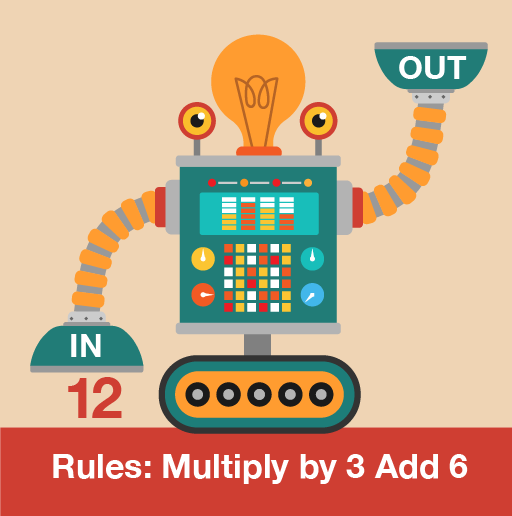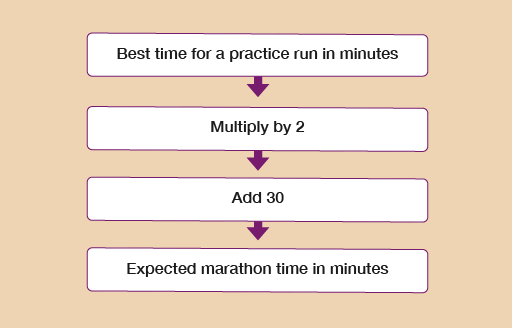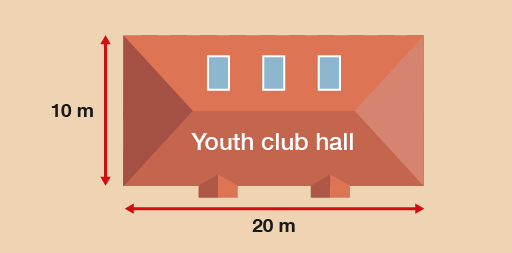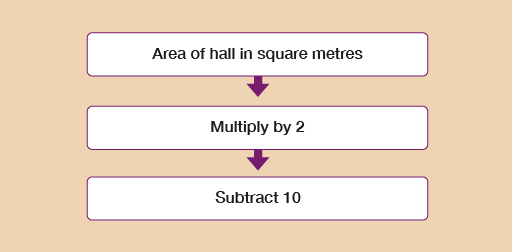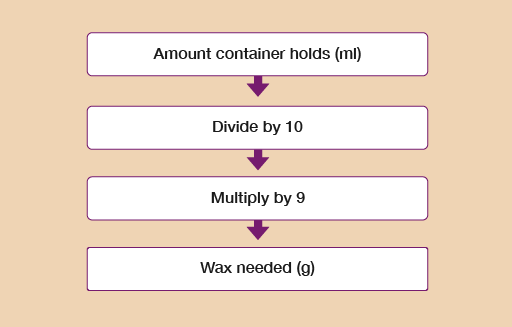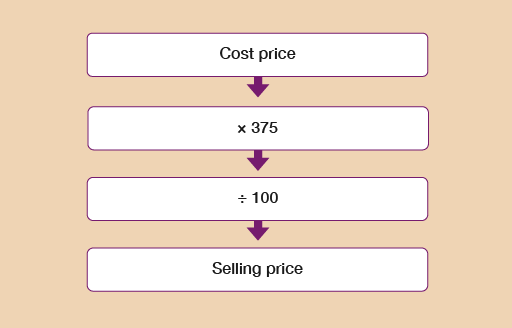9.2 Function machines
Function machines can help when you are working with any formula that has more than one step. The difference between formulas and function machines is that you must follow a function machine in the correct order from left to right, or top to bottom, as shown in the example below. In the Level 2 course on maths you will see that when you use formulas, the BIDMAS rule must be followed.
Example: Marathon training
Dominic wants to run a marathon in under four hours. He finds the following method to work out his expected marathon time:
Dominic’s best time for a practice run is 98 minutes. If he runs a marathon at the same pace, will he complete it in less than four hours?
Method
Dominic’s best practice run is 98 minutes, so you need to put 98 as the first number in the function machine:
98 × 2 + 30 = expected marathon time
98 × 2 + 30 = 226 minutes
So to answer the question: yes, if Dominic runs a full marathon at the same pace he runs during practice, he would finish the marathon in under four hours.
Now you have read the example, please have a go at the following activity.
Activity 22: Using function machines
The battle of the bands will take place in the youth club hall.
Shazad uses the following rule to find out the number of people allowed in any hall:
What is the number of people allowed in the youth club hall?
Answer
If you were to write the function machine as a formula, it would look like this:
- (Area of hall in square metres × 2) – 10 = number of people allowed in the youth club hall
The area of the hall in square metres is:
- 10 × 20 = 200 m²
So we would replace ‘Area of hall in square metres’ in the formula with 200:
- (200 × 2) – 10 = 390
So the maximum number of people allowed in the youth club hall is 390 people.
-
Simon meets a trainer at the leisure centre to set fitness goals. The trainer uses the following rule to calculate Simon’s BMI:
- Simon’s weight in kg ÷ 3 = Simon’s BMI
One of Simon’s fitness goals is to have a BMI between 19 and 25.
He currently weighs 72 kg. Is he meeting his fitness goal?
Answer
Simon’s weight is 72 kg so the calculation is:
- 72 ÷ 3 = 24
Simon’s BMI is 24, so he has met his fitness goal.
Lena makes candles in containers. She knows a rule to work out how much wax she needs (measured in grams) to use for each container (measured in ml):
Lena has a container that holds 200 ml. How many grams of wax should Lena use in this container?
Answer
If you were to write the function machine as a formula, it would look like this:
- (Amount container holds in ml ÷ 10) × 9 = wax needed in g
The container is 200 ml, so we would replace ‘Amount container holds in ml’ in the formula with 200:
- (200 ÷ 10) × 9 = 180
So the maximum amount of wax needed for each container is 180 g.
Kofi sells souvenir photographs to visitors at the karting centre. The cost price of each photo is £2.
Kofi uses this rule to work out the selling price of each photo that will cover his costs and make a profit:
Kofi thinks that the photos should be sold for £8. Is this correct?
Answer
If you were to write the function machine as a formula, it would look like this:
- (Cost price × 375) ÷ 100 = selling price
The cost price is £2, so we would replace ‘Cost price’ in the formula with 2:
- (2 × 375) ÷ 100 = 7.5
So the selling price should be £7.50, not £8.
You have now completed the section on working with word formulas and function machines. If you did not get the questions correct, please return to them and identify where you went wrong.
Summary
In this section you have learned about working with word formulas and function machines.

